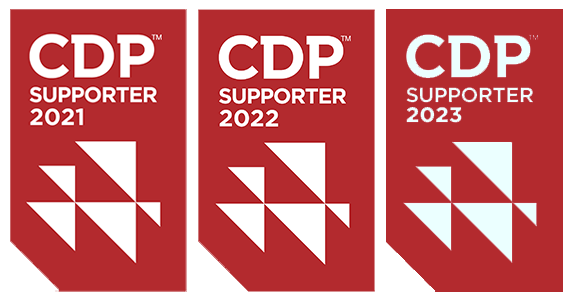Natural Resources
At Adient, we recognize the importance of the Earth’s natural resources such as water and forests to the overall health of our shared planet, and we understand preserving natural resources helps to ensure biodiversity, protect nature and ecosystems, and mitigate climate change. We also realize the importance of a healthy planet to our business continuity and are working to conserve these precious resources in our operations globally.
In 2022, we first issued our Deforestation Commitment and Water Management Policy; in 2024, we updated our Deforestation Commitment to include our recent actions and progress toward our goals. We adhere to applicable local, regional and international laws regulating the use of natural resources and are working to procure raw materials, parts and components from more sustainable sources — and we encourage our suppliers to do the same. Adient’s Environmental, Social and Governance (ESG) Steering Committee and Board of Directors oversee and review, at least quarterly, our actions, commitments and progress toward our climate- and biodiversity-related goals.
Since 2021, Adient has proudly supported the Carbon Disclosure Project (CDP) to enhance innovation, compliance, efficiency and transparency. We complete a detailed climate change, forests and water security questionnaire each year disclosing key data, initiatives and status in these areas. CDP is a not-for-profit organization responsible for the global disclosure system for investors, companies, cities, states and regions to manage their environmental impacts. To view Adient’s current and past CDP scores, visit www.cdp.net.

2024 CDP Score: Climate Change (B), Forests (C), Water Security (B-)
Our Approach:
Biodiversity
In 2024, Adient conducted its first global biodiversity risk assessment in line with the Task Force for Nature Related Financial Disclosures (TNFD) as part of its readiness for the upcoming European Union Corporate Sustainability Reporting Directive (CSRD) and European Union Deforestation Regulation (EUDR) requirements.
Our Approach: Atmosphere and Climate
Adient tracks its greenhouse gas emissions and air pollutants. We endeavor to curb our greenhouse gas emissions and developed scope 1, 2 and 3 emissions-reduction targets in line with the Science Based Targets initiative (SBTi) to limit global warming to 1.5 degrees Celsius. In 2021, we presented our greenhouse gas reduction road map to SBTi using 2019 as our base year. In 2022, SBTi validated our scope 1, 2 and 3 reduction targets.
Progress toward Adient’s Emission-reduction Targets
| Commitment | Status | Progress** |
|---|---|---|
| Reduce scope 1 and 2* greenhouse gas emissions 75% by 2030 | In Progress | 38% reduction |
| Reduce scope 3* greenhouse gas emissions 35% by 2030 | In Progress | On track — focused on improving data accuracy by transitioning from a spend-based to a process-based approach in high-emission commodities |
| Convert 100% of our manufacturing sites to renewable electricity by 2035 | In Progress | 29% of electricity usage attributable to renewable sources |
** As of September 30, 2024

Risk Assessment
In 2022, we completed a high-level risk assessment of leather and timber-based packaging to understand more about how and where each commodity was sourced and assess the potential business impacts to Adient. Additionally, Adient formed a cross-functional Supplier Due Diligence Working Group in 2023 that focuses on tasks related to human rights and sustainability requirements in the supply chain.

Transparency
In 2023, we completed a supply chain mapping exercise of leather, timber-based packaging, and soy and palm oil products. We gained meaningful insight into our tier 1 and tier 2 suppliers and sourcing regions, and we continue mapping our supply chain each year to close any gaps by using annual supplier surveys and leveraging assistance from non-governmental organizations (NGOs).

Classification System
From the supply chain mapping exercise, we developed a classification system for forest commodity suppliers where their risk potential is ranked high, medium or low based on product sourcing region, supply chain mitigation actions, willingness to share information, and sustainable certifications. The system is to be used to inform purchasing decisions.

FLAG Emissions
In 2023, we completed calculating our Forestry, Land and Agricultural (FLAG) emissions to understand our carbon footprint related to forest commodity procurement and in line with the Science Based Targets initiative (SBTi). The resulting FLAG emissions are below the SBTi threshold for mandatory target setting.

Stakeholder Groups
We are a member of the Leather Working Group and meet regularly with Global Canopy and World Wildlife Fund (WWF) to discuss deforestation related topics. In 2023, we participated in a WWF sponsored workshop with other automotive suppliers to understand potential opportunities in our leather supply chain.

International Sustainability & Carbon Certification (ISCC)
We are working with our supply chains to procure less carbon-intensive chemicals for our foam cushion products as part of the ISCC certification, including soy and palm oils.
Adient’s Progress toward our Forest Commodity Targets*
| Commitment | Status | Progress |
|---|---|---|
| Conduct supply chain mapping of Adient-controlled soy and palm products (100%) by 2025. | Achieved | > 100% tier 1 response rate and sourcing regions identified > 75% tier 2+ response rate |
| Work with 100% of our soy and palm supply chain to understand status of sustainable certifications during 2023. | Achieved | > 100% of tier 1 suppliers can offer sustainably certified product |
| Work with 75% of our timber-based packaging supply chain to understand status of sustainable certifications during 2023. | Achieved | > Engaged with 89% of our packaging suppliers > 51% of our suppliers are using sustainable-certified materials |
| Conduct supply chain mapping of Adient-controlled leather products (100%) by 2025. | In Progress | > Engaged with 100% of key** leather suppliers (directed and controlled) in the mapping exercise > 42% tier 1 response rate (58% data gap filled via market research) > 70% of sourcing regions identified > 19% tier 2+ response rate |
| Conduct supply chain mapping of Adient-controlled timber-based products (75%) by 2025. | In Progress | > Engaged with 100% of key packaging suppliers (directed and controlled) in the mapping exercise > 70% tier 1 response rate (58% data gap filled via market research) > 70% of sourcing regions identified > 47% tier 2+ response rate |
| Identify opportunities to increase the percent of sustainably certified timber-based packaging materials received by Adient from our global supply base by September 2025. | In Progress | > 2024 study completed with key timber-based packaging suppliers in each region |
| Develop key priority actions for protecting biodiversity in line with the Task Force for Nature Related Financial Disclosures (TNFD) by September 2025. | In Progress | > First biodiversity risk assessment completed > Evaluate findings to develop key priority actions going forward |
*As of Sept. 30, 2024
**Adient excluded low-spend suppliers from the mapping exercise
We collaborate with various stakeholders, suppliers and advisors to comply with European Union Deforestation Regulation (EUDR) and the German Due Diligence Regulation via an internal supplier due diligence working group.
Our Approach:
Water Management
Adient believes that access to clean, safe drinking water is a fundamental human right. We conduct our business in a manner to minimize withdrawals and ensure water is managed in compliance with local regulations and best practices. We use water in our facilities for safe drinking-water, sanitation and hygiene (WASH) purposes and as a component in some of our production processes, recycling and re-using water wherever reasonably possible.
In 2024, Adient launched its Global Water Initiative — a project-tracking exercise that aims to uncover water-reduction opportunities and promote ideas and success stories at Adient’s sites around the world. The project is still in progress but has already helped locate numerous opportunities for water savings.
| Fiscal Year 2023: Total Adient | Fiscal Year 2023: Total Adient | Fiscal Year 2024: Total Adient |
|---|---|---|
| Total Water Withdrawals | 1,346,000 cubic meters | 1,258,962* cubic meters |
| Third Party-Water | 1,252,000 cubic meters | 1,170,532 cubic meters |
| Groundwater Withdrawals – On Site | 93,000 cubic meters | 88,430 cubic meters |
| Water Discharges | 962,000 cubic meters | 1,085,000 cubic meters |
| Water Consumption | 384,000 cubic meters | 173,962 cubic meters |
| Water Withdrawals in High-Water-Stress regions | — | 367,748 |
| % of Water Withdrawals in Countries with High and Extremely High Baseline Water Stress Indicator | — | 29%* |
| Total recycled/reused water | — | 8,426 |
| Rainwater | 385 | 902 |
| Water intensity** | 86.8 cubic meters/$ millions in sales | 85.2 cubic meters/$ millions in sales |
- * PricewaterhouseCoopers LLP performed a limited assurance engagement over total water withdrawal, and % of water withdrawals in countries with high and extremely high baseline water stress indicator. The Report of Independent Accountants and Adient Management Assertion are also provided in the Appendix of Adient’s 2024 Sustainability Report.
- ** Intensity values calculated using the sum of net sales for all three regions before any corporate eliminations.

Risk Assessment
In 2021, we conducted our first water security risk assessment to identify our sites that exist in regions of high water stress. In 2024, we repeated this activity to ensure recently added sites were included. Through the assessments, we identified 39 manufacturing and 12 non-manufacturing sites that reside in areas of high water stress, in 12 countries across the three regions. We are focusing our efforts and resources on our sites facing challenges related to flood risk and water quality.

Scenario Analysis
We have completed a water scenario analysis and identified potential scenarios based on 2020, 2030 and 2050 data simulations. From the analysis we plan to continue analyzing our risks, work with experts in water security, establish monitoring key performance indicators (KPIs), and continue working with high-consumption locations to reduce their water usage. Through our water reduction project initiatives around the world in fiscal year 2023, we reduced consumption by 52,000 cubic meters.

Wastewater
We track and monitor wastewater discharges from all of our global sites. All water is discharged/treated within local effluent regulatory parameters. Sites are audited by third parties to ensure regulatory compliance.
Learn More
For more information about Adient’s actions to combat deforestation and preserve our natural resources, please visit adient.com/sustainability or email sustainability@adient.com.

